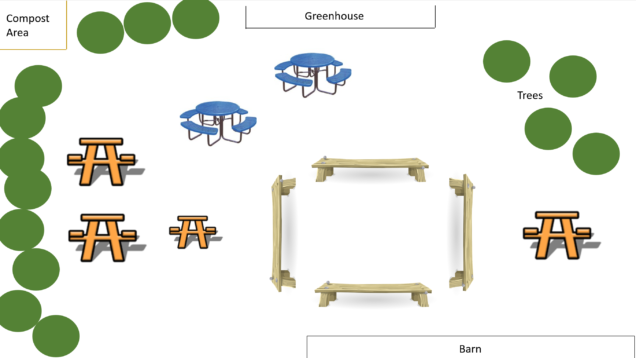Commensality at the Lunch Table
The next in our series of posts from Summer Term course, Anthropology of Food (MET ML 641) is from Gastronomy student Meghan Russell.
If you read popular newspapers or magazines, you may have seen that the American lunch hour is being threatened. More and more Americans are working through their lunch hour, skipping it altogether, or eating at their desk as they continue to work. One place where lunchtime is still alive and well, however, is in the school cafeteria. While I won’t be speaking to the cafeteria per se, I will be examining elementary school lunch-time as experienced during a class field trip to an area farm. I work as a Farm Educator at this farm and therefore have the opportunity to observe many students interact as they each lunch at their end of their field trip.

Field trips offer an interesting look into school lunches because there is no hot lunch option provided by the school. Everyone is eating something brought from home. This creates immediate differences between each of the students that can be broken down and analyzed at various levels. For one, each student brings his or her lunch in its own unique receptacle. While the classic brown paper bag is still a popular option, the simple plastic lunch box with a pop culture icon on the front is gone. These have been replaced by a variety of nylon and zip-up options in a variety of sizes and colors, often with matching water bottles. Some students have individual compartments built into their lunch box to separate out their items, while others have individual plastic containers that hold the various pieces of their lunch within. In addition to these fancy, sustainable, and eco-friendly options some students also use a simple plastic grocery bag or a gallon-sized Ziploc bag.
Within these various lunch receptacles are a wide range of food items. Some students still bring the classic sandwich with a bag of chips and a piece of hand fruit. The old stand-by of a peanut butter and jelly sandwich, however, has been replaced by sunbutter and jelly or a lunch meat sandwich to accommodate for allergies. Some students have expensive berries, organic squeeze poaches, and Lunchables. Others have ethnic items representative of the immigrant status of the parents, the student, or both – a bag of sushi, a noodle dish with chop sticks, or a Vietnamese sweet cake.
In addition, a student’s choice of seat for lunch impacts his or her lunch experience. This particular area consists of multiple picnic tables placed around a square of wooden benches. If a student decides to sit on the bench, she must either hold her lunch on her lap or place it down next to her. This orients her lunch experience. Will she engage in one-on-one conversation with the student sitting next to her, who may have also placed her lunch down on the bench so that they are facing each other in a mini-conversation? Will she face forward in silence? Or will she try to yell across the open space to someone on the other bench? Sitting at one of the picnic tables creates larger conversations involving the upwards of eight or ten students that can fit at the table.
Among all these differences, the students are all hungry, and it is lunchtime. After being split up in groups all morning for their field trip, the students are happy to be back together. Watching them eat lunch, there doesn’t seem to be any acknowledgement of differences between what they are eating for lunch or what their lunch came in. Each is engaged in his or her own experience yet they are also all eating lunch together. To engage in commensality, it doesn’t matter what any one individual is eating. What matters is the socialization that is occurring, the sharing of space and time.